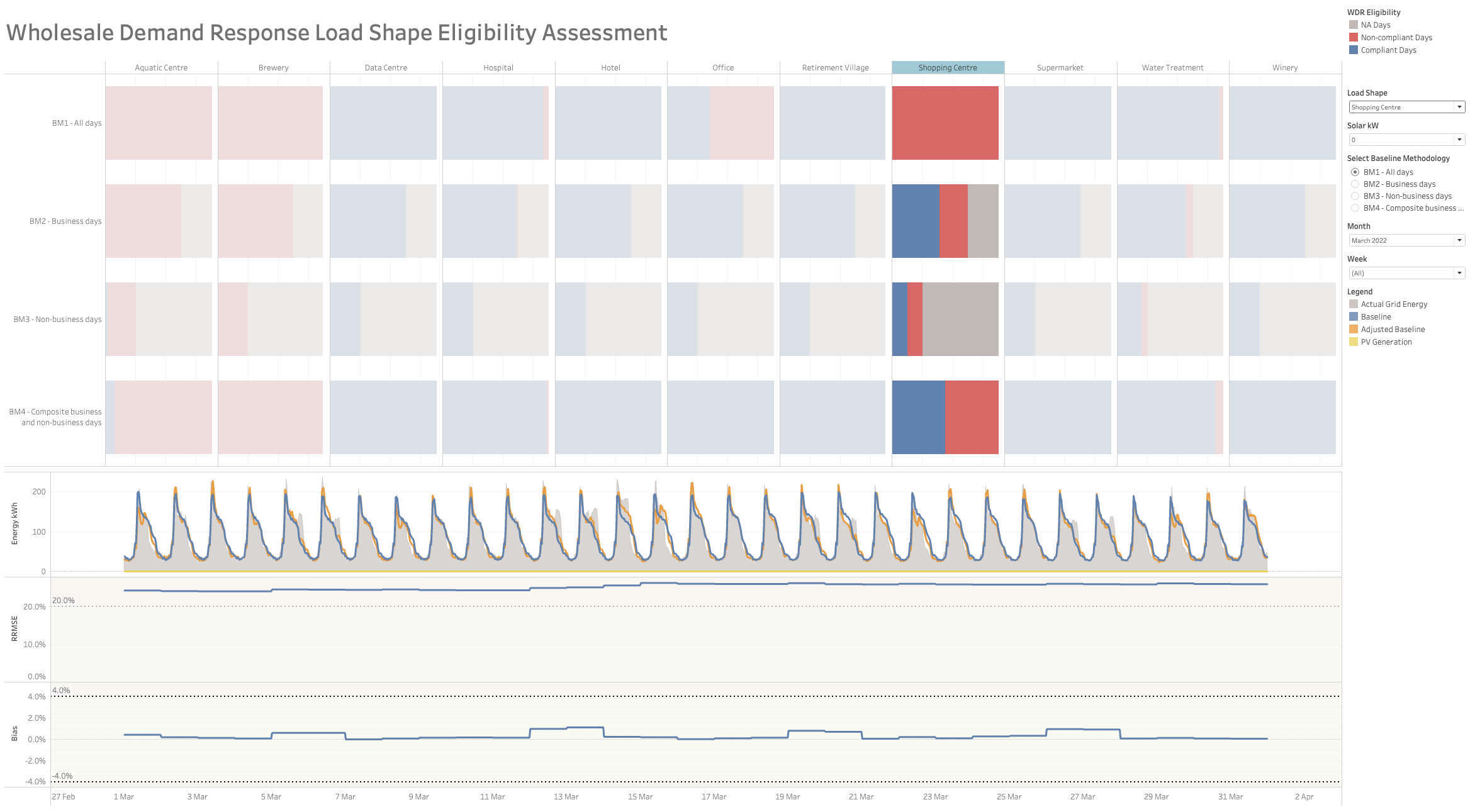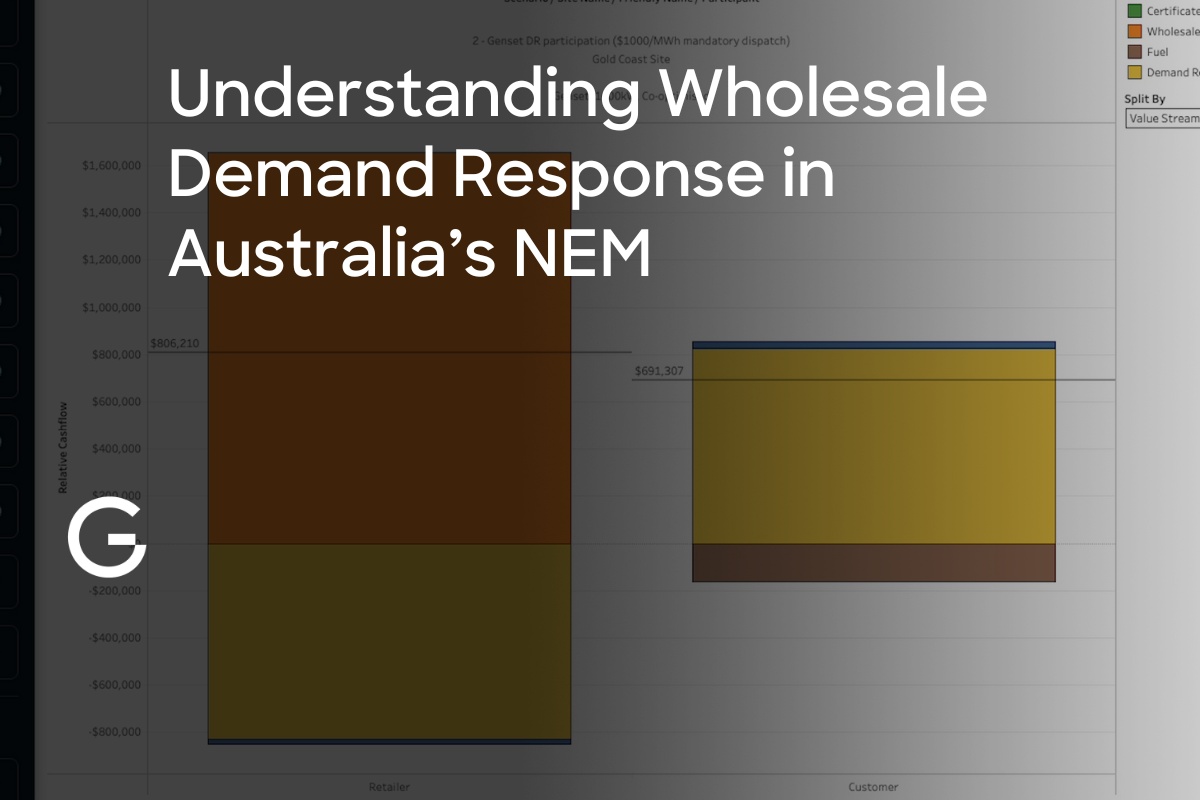Wholesale Demand Response in the NEM: Eligibility deep dive

TL;DR
- Jump to the results to see which C&I load shapes will be eligible* to play in the new Wholesale Demand Response market.
- Upload your site interval data and we’ll run it through the Gridcognition software (for free!) and tell you whether you’re likely to qualify or not.
In Part 1 of this short series of posts on the new Wholesale Demand Response (WDR) mechanism in Australia’s National Electricity Market (NEM), we covered the basics of the new rule change and touched on a couple of the important areas that energy users will need to familiarise themselves with before they put their hands up to participate.
WDR has many considerations. The two top priorities for most prospective participants are eligibility and commercial reward.
In this post we take a practical deep dive into the eligibility question. To do this we jump some real-world load profiles through the statistical hoops mandated by AEMO to see who will, and who won’t, make the cut, and we further explore the impact that distributed technology like solar PV could have.
Before we get into the nitty gritty, it’s worth a quick refresher on what the eligibility thing is all about. Again, a read of the first post might be helpful at this point.
Eligibility: the WDR ticket to ride
AEMO only wants sites to participate in WDR if their load shapes are sufficiently consistent, referred to in the rules as Predictability of Load, or PoL. This is to ensure AEMO has a good sense of what DR response can be offered into the market and then to assist in settlement following a DR event.
In AEMO’s own words, the PoL assessment uses a series of baseline calculations from relevant days in the NMI’s recent history to return two outputs, an accuracy score and a bias score. If the accuracy and bias fall within the stated thresholds then the PoL is considered to be ok and the site qualifies.
Those two measures are defined as follows:
- Accuracy is a baseline’s relative root mean squared error (RRMSE). The RRMSE quantifies the absolute error in the baseline. The RRMSE is normalised by the average load over the assessment period.
- Bias is the baseline’s average relative error (ARE). This statistic, for a given customer site, is the average baseline per trading interval (TI) less the average actual load per TI, expressed as a fraction of the average load over the assessment period.
For the launch of WDR, AEMO are offering four baseline methodologies, differentiated by day type:
- Business days,
- Non-business days,
- All days,
- A composite of business and non-business days.
Obviously the nature of operations at a particular site will likely lend itself more towards one baseline methodology than another. Although it’s important to note that you can only bid into the WDR for days that you’ve been qualified for, so for example if your load shape qualified against Baseline Methodology 1 (business days) then you can’t bid into a WDR event on a weekend.
Real World Examples
With those rules in mind, we’ve taken 12 months** of interval data for a range of commercial and industry sites and assessed them against each of the four baseline methodologies provided by AEMO.
For interest, we’ve also modelled how the load shapes for each site would change with the addition of behind-the-meter solar PV and the corresponding impact on predictability/eligibility in the context of WDR. This is important because as we move towards a more decentralised energy system we see a proliferation of highly steerable distributed energy assets (solar, battery storage, EV chargers etc) being co-located with load. This shift inevitably alters the load shape seen by the grid.

In a follow up post we’ll take the next step to explore what role battery storage might play in WDR remembering that the NEM is supposed to be gearing up to support more and more DER within the system…
* we are focussing on the Predictability of Load assessment. There are other eligibility criteria to consider.
** In reality a site’s eligibility will only be assessed on registration into the WDR mechanism and then periodically for compliance testing, although there’s no mention in the documentation (from what we could find) of how or when that compliance testing might occur.
To read up on all the details yourself this is a pretty good place to start: AEMO Wholesale Demand Response homepage.







